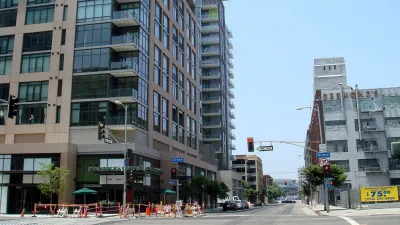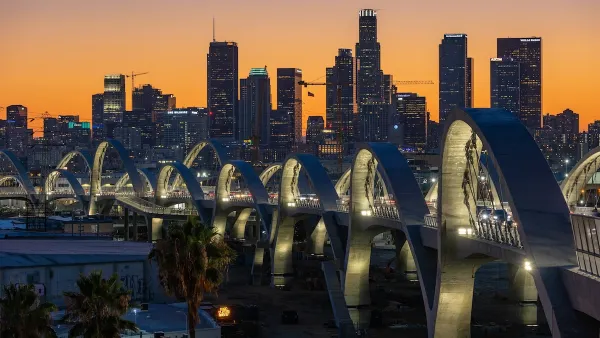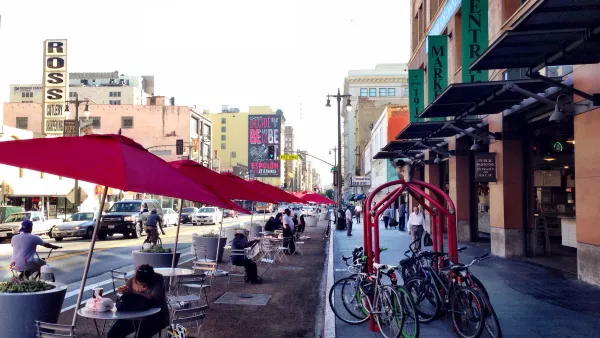Chinese developers are pouring money into high-rise housing projects in Los Angeles. But will these be pieds-a-terre for absent buyers? And how are developers dealing with the American regulatory environment?

To a large extent, Asian money is driving much of the current development in Downtown L.A. Developed by Korea's Hanjin Group, the Wilshire Grand Center is currently the tallest building on the West Coast. And in recent years, David Pierson writes, "Chinese developers such as Greenland, Oceanwide and Shenzhen Hazens are pouring billions into the neighborhood, adding thousands of new residential units in soaring skyscrapers that will fundamentally change the city's skyline."
"'When all these megaprojects are finished, they’re going to have to reshoot the postcard picture of downtown L.A.,' said Mark Tarczynski, executive vice president for Colliers International's L.A. office."
Flush from the go-go building climate in cities like Shanghai and those surrounding the Pearl River Delta, Chinese developers have had to get used to a safer, more regulated approach in the United States.
In addition to the usual anti-development arguments, a concern on the American side is that Chinese developers "can rely on both local and Chinese-based home buyers to scoop up their condos. [...] Some downtown L.A. residents have expressed concern that Chinese investors will leave their properties empty — a phenomenon common in China and antithetical to the dense urban neighborhood many local boosters have long championed."
Taxes are also structured differently between both countries. "In China, there's no real property tax, so local governments rely on land sales for more than a quarter of their revenue. That gives them every incentive to expedite real estate development."
FULL STORY: They built towering new cities in China. Now they're trying it in downtown L.A.

Analysis: Cybertruck Fatality Rate Far Exceeds That of Ford Pinto
The Tesla Cybertruck was recalled seven times last year.

National Parks Layoffs Will Cause Communities to Lose Billions
Thousands of essential park workers were laid off this week, just before the busy spring break season.

Retro-silient?: America’s First “Eco-burb,” The Woodlands Turns 50
A master-planned community north of Houston offers lessons on green infrastructure and resilient design, but falls short of its founder’s lofty affordability and walkability goals.

Test News Post 1
This is a summary

Analysis: Cybertruck Fatality Rate Far Exceeds That of Ford Pinto
The Tesla Cybertruck was recalled seven times last year.

Test News Headline 46
Test for the image on the front page.
Urban Design for Planners 1: Software Tools
This six-course series explores essential urban design concepts using open source software and equips planners with the tools they need to participate fully in the urban design process.
Planning for Universal Design
Learn the tools for implementing Universal Design in planning regulations.
EMC Planning Group, Inc.
Planetizen
Planetizen
Mpact (formerly Rail~Volution)
Great Falls Development Authority, Inc.
HUDs Office of Policy Development and Research
NYU Wagner Graduate School of Public Service




























